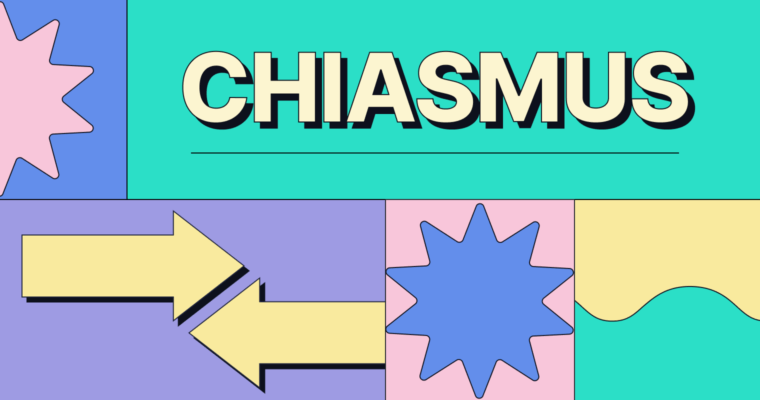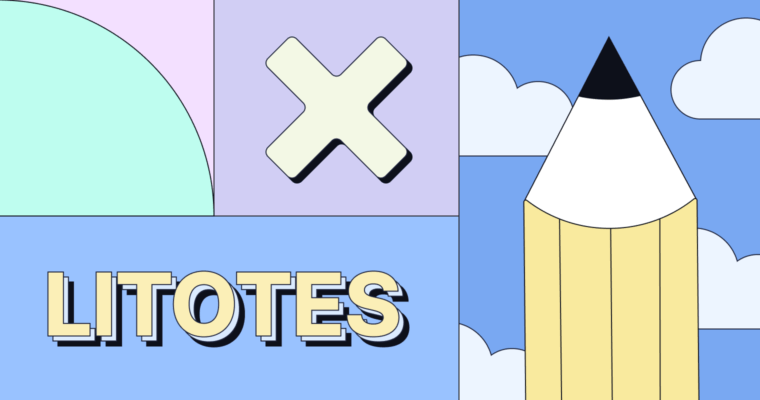
Imagine you’re reading an engrossing essay about strategies you can use to increase your short-term memory and retain information better. Instead of only presenting statistics and dry scientific data, it repeats important words, illustrates concepts through analogies, and simplifies key concepts in a way that makes the essay easy to comprehend. These are known as rhetorical devices.
Here, we unpack the meaning of rhetorical device and how it can impact a reader’s perception of whatever they are reading or hearing.
What is a rhetorical device?
A rhetorical device is a linguistic tool that evokes a specific kind of understanding in a reader or listener. Generally, rhetorical devices are used to make arguments or bolster existing arguments.
To understand rhetorical devices, you need to first understand rhetoric. Rhetoric is language that’s used to connect with audiences and inform, motivate, or persuade them. Rhetoric comes in four categories:
- Logos: Language that appeals to logic and reasoning.
- Pathos: Language that appeals to emotion.
- Ethos: Language that bases its credibility in its speaker’s authority.
- Kairos: Language that communicates the timeliness of its speaker’s position.
Rhetorical devices are the strategies used to communicate rhetoric to an audience. In essence, they’re the how of how rhetoric works. Rhetorical devices can incorporate any of the four forms of rhetoric and, in some cases, more than one.
December is the best time of year to buy a car because salespeople are trying to meet their annual sales goals. Thus, they are more willing to negotiate with buyers and offer discounts.
This example uses both logos and kairos to push the reader to buy a new car in December.
Additionally, rhetorical questions are a type of rhetorical device that aim to create an effect rather than elicit a response or answer.
What’s the purpose of a rhetorical device?
The purpose of a rhetorical device is to influence how an audience understands and engages with the material. It could be to connect with the reader emotionally and push them to empathize with a particular position, or to connect with their logical mind and demonstrate why a specific position is well crafted.
In writing, rhetorical devices are used to achieve one or more of the following:
- Help explain your position
- Challenge an existing point of view
- Elicit a strong reaction
- Make an emotional connection
Because rhetorical devices speak directly to the reader, they are often used in pieces of writing like personal essays, argumentative and persuasive essays, blog posts, speeches, opinion pieces, and social media posts. In fiction, rhetorical devices can be part of dialogue to show readers a character’s thoughts and perspective.
Avoid using rhetorical devices in pieces of academic writing like research papers and analytical essays. Similarly, avoid them in professional communication. These types of writing require a detached, professional tone, and rhetorical devices can often undermine this kind of tone.
Do not allow rhetorical devices to stand in for well-researched, well-supported arguments in your writing. When a writer does this, they often venture into logical fallacy territory. As you outline and write, make sure every argument you present is logically supported by credible evidence, and once you have a clear, coherently structured piece, you can work in rhetorical devices to amplify your message.
What are the elements of a rhetorical device?
Although rhetorical devices take many different forms, they’re grouped by their similarities. These characteristic elements include:
- Simplicity. Often, rhetorical devices are used to make complex subjects more accessible.
- Poetic language. While rhetorical devices don’t necessarily need to rhyme or stick to a meter, they often incorporate poetic elements like rhythm and imagery.
- Provocation. The purpose of a rhetorical device is to elicit a response in the reader or listener. Every rhetorical device aims to do this.
Rhetorical device vs. literary device
Rhetorical devices have a lot in common with literary devices. In fact, many literary devices can also be used as rhetorical devices.
For example, as a literary device, metaphor is writing that’s literally about one subject, but figuratively about another. A poem about expiring food in a refrigerator could be a metaphor about the importance of maintaining friendships. The metaphor is the substituted subject—in this example, the expiring food is a metaphor for friendships that haven’t been kept up. Literary devices can be an effective way to communicate themes in writing because they illustrate the themes, rather than simply stating them.
Rhetorical devices work the same way. By employing a rhetorical device in your writing, you can guide the reader to understand its themes without feeling like you’re making them too obvious or presenting them in an overly didactic way.
Rhetorical and literary devices are executed the same way—they’re woven into a piece of writing to make the piece more vivid, with the goal of connecting with the reader in a way that effectively communicates its themes. The goal, however, varies slightly. While a literary device serves to simply underscore a piece’s themes, rhetorical devices aim to guide the reader to perceive the writing a certain way. This could be to empathize with the author, trust the author, understand an issue from a new perspective, or to challenge their previous beliefs about the writing’s subject.
13 types of rhetorical devices
Like literary devices, some rhetorical devices are used on the sentence level, while others operate as the “big picture” in the writing. Similarly, some play with words’ sounds, creating rhythm and texture. Rhetorical devices that don’t involve sounds, like satire and metaphor, can be just as effective in writing as in speech.
Here are some of the most commonly used devices:
- Anaphora: Repetition used to create a rhythmic effect, typically used for emphasis.
- Chiasmus: A device in which words, grammatical constructions, or concepts are repeated in reverse order to deepen an idea or create a memorable rhythm.
- Climax: Gradually building intensity in subsequent sentences for dramatic effect.
- Connotation: The sense or image a word evokes, used strategically to influence readers or listeners.
- Epithet: The use of a nickname to describe somebody.
- Hyperbole: Exaggerated statements or claims meant to grab attention, not to be taken literally.
- Litotes: An understatement that states a positive attribute as an inverse of its opposite, often for ironic effect.
- Meiosis: A euphemistic understatement meant to belittle or reduce its subject.
- Paradox: A statement that, while contradictory, makes logical sense.
- Parallelism: The use of grammatically similar sentences together to create emphasis.
- Personification: The attribution of humanlike characteristics to an animal or object.
- Satire: The use of irony or exaggeration to create a humorous, critical effect.
- Synecdoche: Using a part of something to refer to it as a whole.
Rhetorical device examples
“But in a larger sense, we cannot dedicate, we cannot consecrate, we cannot hallow this ground.” —Abraham Lincoln, “The Gettysburg Address” (Anaphora)
“If growing up is painful for the South Black girl, being aware of her displacement is the rust on the razor that threatens the throat. It is an unnecessary insult.” —Maya Angelou, I Know Why the Caged Bird Sings (Personification)
Fool me once, shame on you. Fool me twice, shame on me. (Parallelism)
“Friends, Romans, countrymen, lend me your ears.” —Shakespeare, Julius Caesar (Synecdoche)
It’s not rocket science. (Litotes)
“I can resist anything but temptation.” —Oscar Wilde (Paradox)
A penny saved is a penny earned. (Aphorism)
“Despised, if ugly; if she’s fair, betrayed.” —Mary Leapor (Chiasmus)
It was a million degrees outside. (Hyperbole)
Rhetorical device FAQs
What is a rhetorical device?
A rhetorical device is a linguistic tool that’s meant to evoke a specific kind of understanding in the reader or, in the case of spoken language, the listener. Generally, they are used to make arguments or bolster existing arguments.
What are the elements of a rhetorical device?
- Simplicity: Rhetorical devices are often used to make complex subjects more accessible.
- Poetic language: Rhetorical devices often incorporate poetic elements like rhythm and imagery.
- Provocation: The purpose of a rhetorical device is to elicit a response in the reader or listener.
What are the different kinds of rhetorical device?
A few examples of rhetorical device include:
- Anaphora
- Hyperbole
- Litotes
- Personification
- Satire






